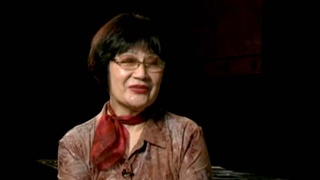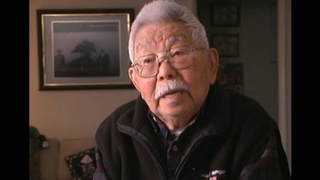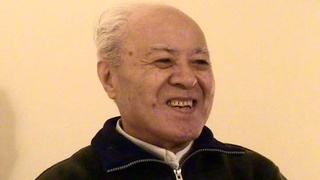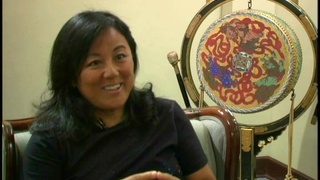Interviews
Mother's immigration to U.S. as a treaty merchant
And so my mother had to come in a different status, which was called the treaty merchants. And from what I understand, to be a treaty merchant that had to mean that you were fairly comfortable. And so, though my father, being a young man, didn't have the funds, they had to pretend that they were wealthy enough and signed up for the first-class and my mother was told that she had to behave very properly, and that's how they came.
Date: August 3 & 4, 2003
Location: Washington, US
Interviewer: Alice Ito
Contributed by: Denshō: The Japanese American Legacy Project.
Explore More Videos

Treatment of Japanese Paraguayans during World War II (Spanish)
Nisei Paraguayan, Researcher

Yobiyose system in Canada
(b. 1922) Canadian Nisei who was unable to return to Canada from Japan until 1952

Reason to come back to Canada in 1954
(b. 1922) Canadian Nisei who was unable to return to Canada from Japan until 1952

Impressions from interviews with Issei women (Japanese)
Tsuda College President, researcher of Nikkei history

The various realities of Nikkei in Latin America (Spanish)
(b. 1950) Nisei Chilean, Businessman

Avoiding the Japanese military
(1914-2004) Nisei Bonsai master in the United States

Tango makes him to stay in Argentina (Spanish)
(1925-2014) La Plata Hochi, Journalist



Initial struggles with the language barrier (Japanese)
(b. 1917) Okinawan, Issei Argentinean

Decision to settle in Argentina after WWII (Spanish)
(b. 1929) Nisei Argentinean


Government urged Japanese Canadians to go to Japan
(b. 1928) Doctor. Former Chair of the Japanese Canadian Redress Foundation.

The myth of the sacrifice of immigrants (Spanish)
(b. 1962) Peruvian Poet, Okinawan descendant

